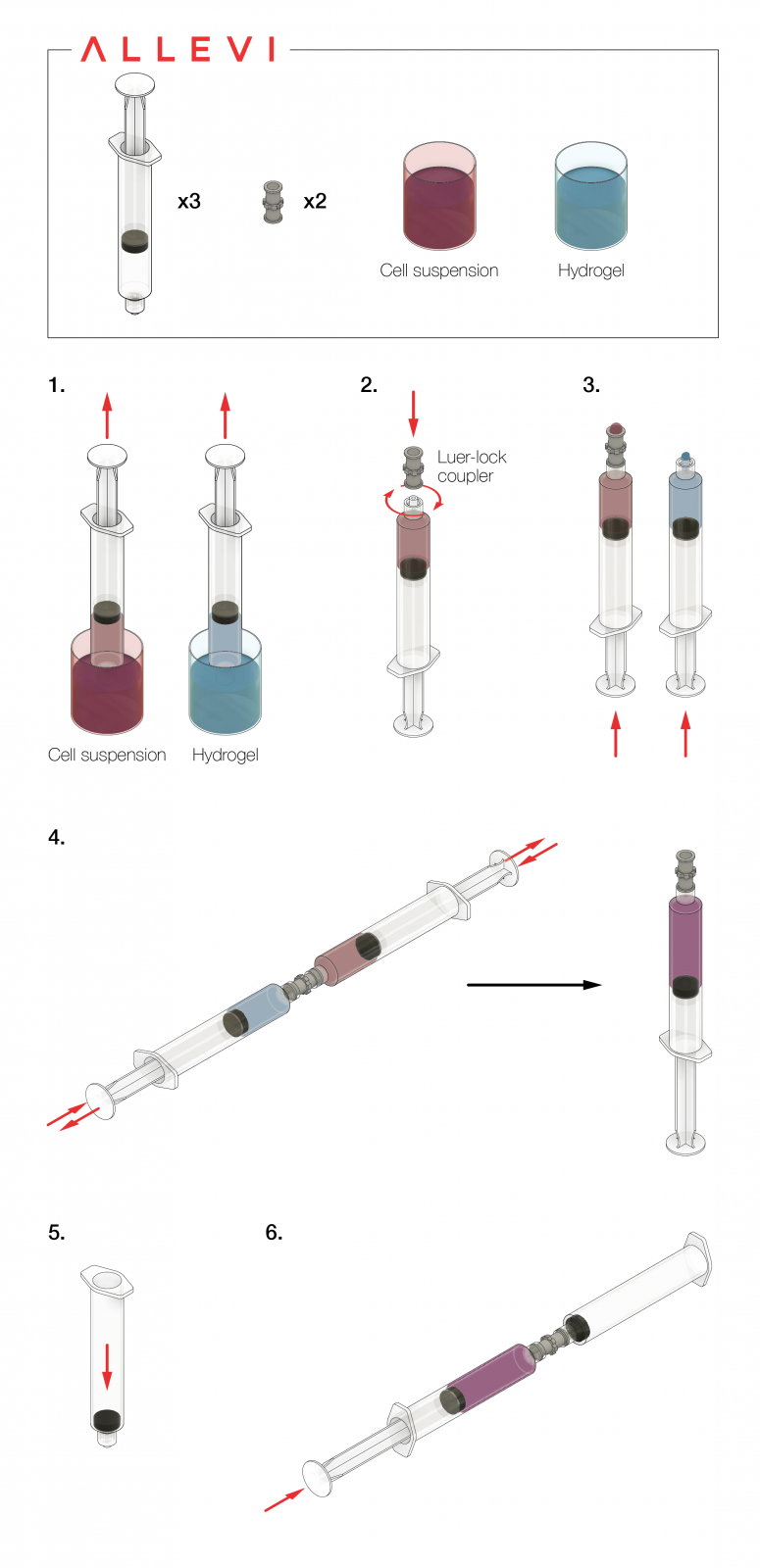

Overview
When bioprinting with a cell-laden bioink, it is important to thoroughly mix your biomaterial (or bioink) with your cells of choice in order to get a homogeneous cell distribution. This protocol for cell- bioink mixing using a syringe coupler is a helpful guide for this key step in the bioprinting process.
Materials
- Allevi 5 mL syringes
- Syringe caps
- Syringe couplers
- Cells
- Cell media
Methods
- Calculate the number of cells needed. This will vary depending on the cell type and your final application;
- Prepare a high-density cell suspension by centrifuging the desired number of cells and resuspending them in a small volume of cell culture media. Keep in mind that depending on the volume of the cell suspension and your biomaterial, you might affect the final concentration of the hydrogel. Include that factor in your calculations;
- Note: you may check out our Passaging Cells and Preparing a Cell Pellet protocols.
- If possible, pre-warm your sterile biomaterial to 37 °C to avoid temperature stress for the cells. Keep in mind that some materials should be kept at low temperatures to ensure good printability (e.g. collagen);
- Aspirate the cell suspension into a syringe with the Luer-lock tip;
- Load your biomaterial into a syringe with the Luer-lock tip by aspirating it from its container;
- Attach a sterile Luer-lock coupler on the end of the syringe with the cell suspension;
- With your cell media syringe, slowly push the plunger in until the media forms a slight external meniscus above the end of the coupler on the syringe;
- With your biomaterial syringe, slowly push the plunger in until the hydrogel forms a slight external meniscus above the end of the syringe;
- Couple the syringe with cells to the syringe with the biomaterial. Ensure that there are no air bubbles in the system;
- Slowly push plungers back and forth ~40 times to ensure thorough mixing. End with all of the now cell-laden material in the biomaterial syringe;
- Remove the rubber stopper from the plunger of a new sterile syringe (10 mL for Allevi 2 and 5 ml for Allevi 1, 3 and 6) and insert the stopper all the way up in the syringe. This will create a seal for the biomaterial and ensure correct pressure distribution during your bioprint;
- Attach the syringe with cell/biomaterial mix to the printing syringe using Luer-lock coupler;
- Slowly push all the material to the printing syringe;
- Attach the printer extruder adaptor to the syringe and place it into the extruder head. Make sure you lock it in the place to avoid movement during the printing.
Note: While calculating the necessary volume of your biomaterial, take into account dead-volume in the Luer-lock coupler and needle tips, which might affect the amount of material available for bioprinting.
Note: If your material has low viscosity and is easy to pipette, you can alternatively combine cell suspension and biomaterial in a tube and aspirate that mixture to a syringe. After loading your syringe, go to step 11.
Now that your cells are properly mixed, you are ready to bioprint! Click here for more bioprinting protocols.

